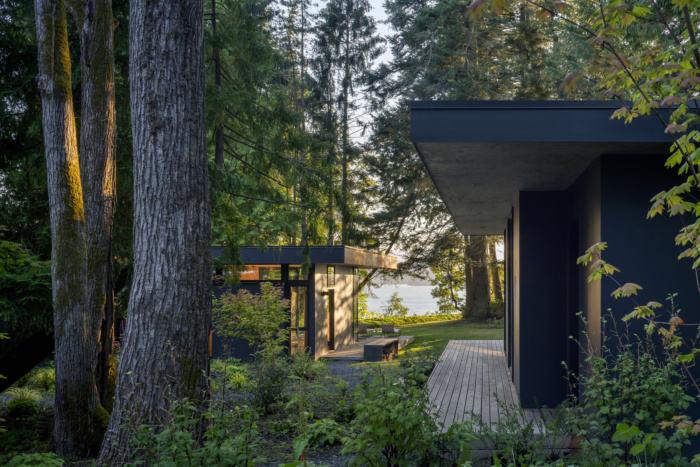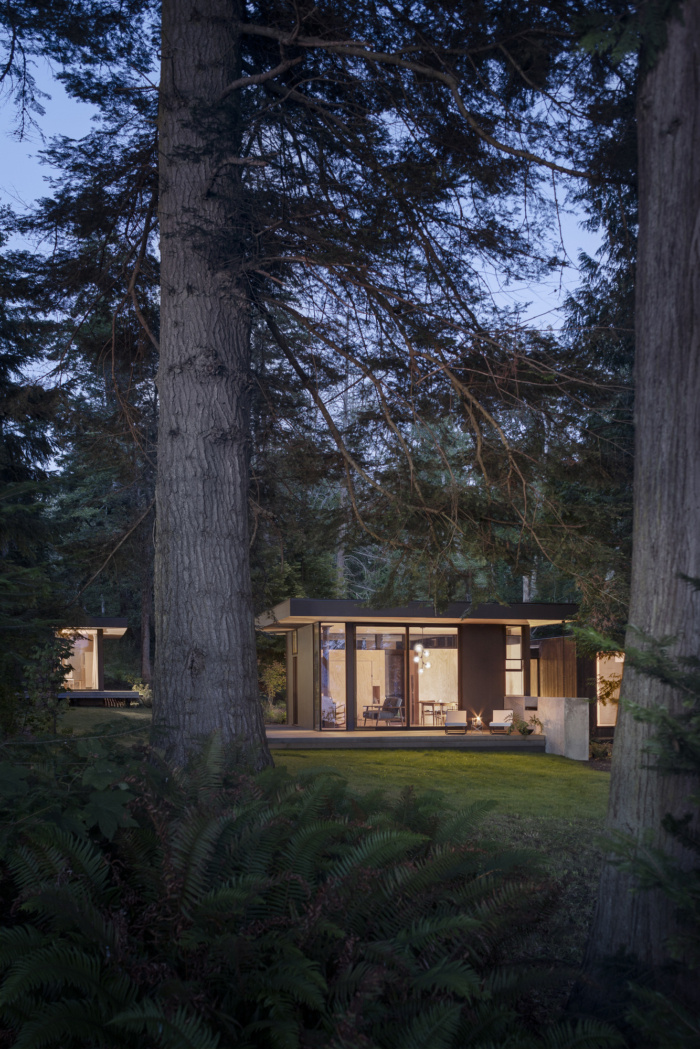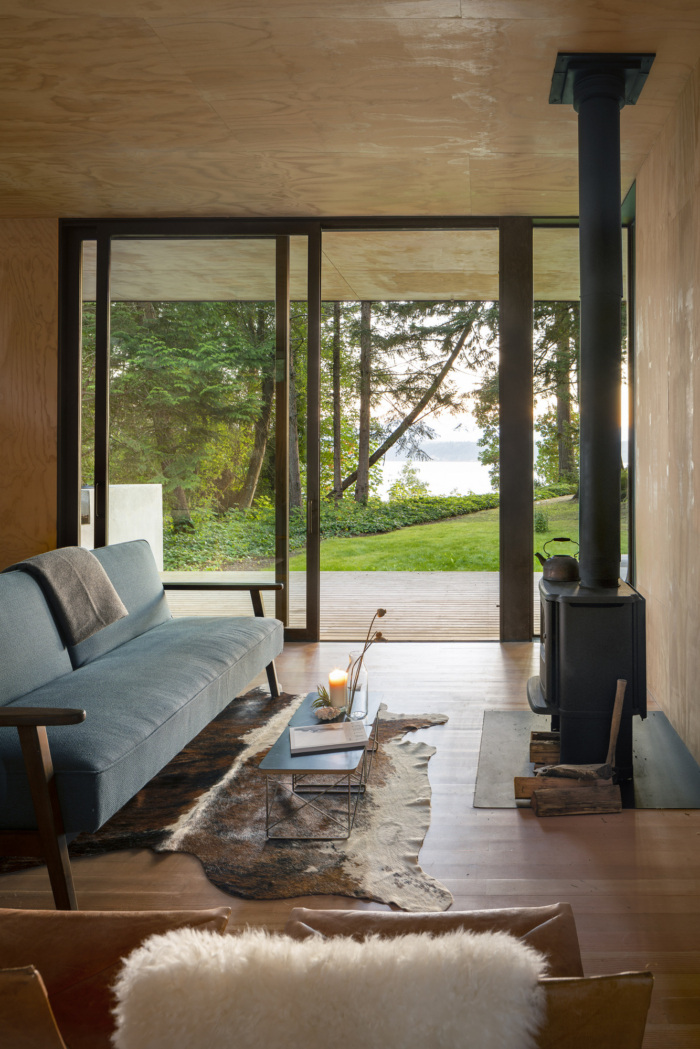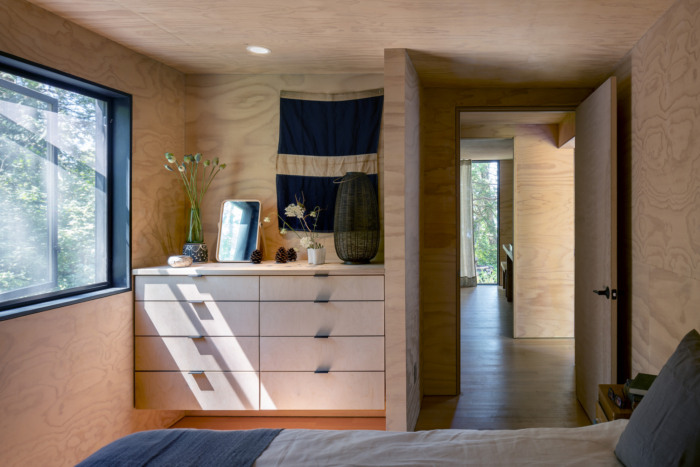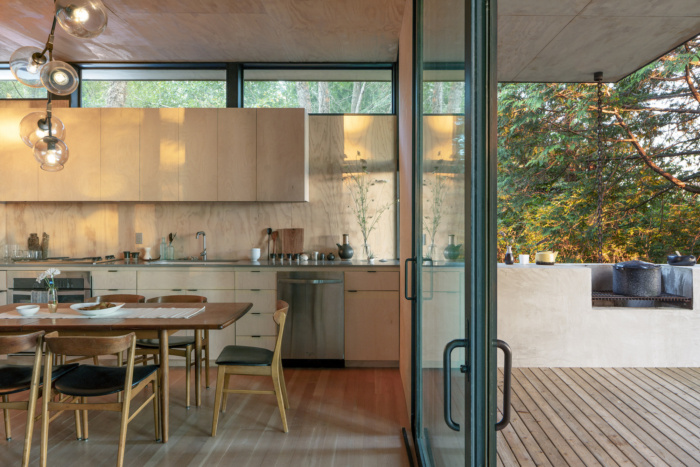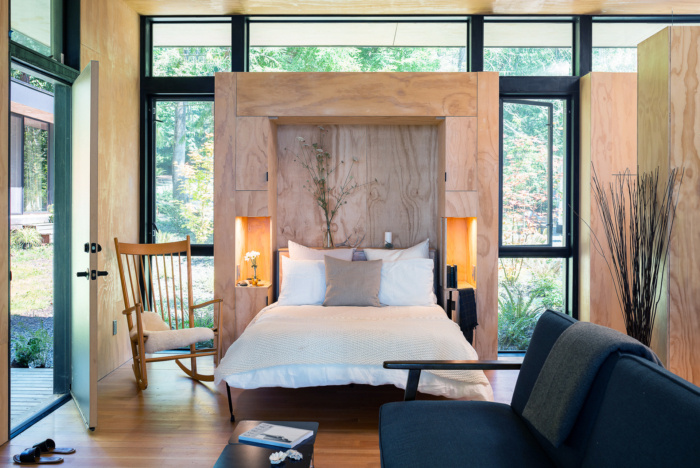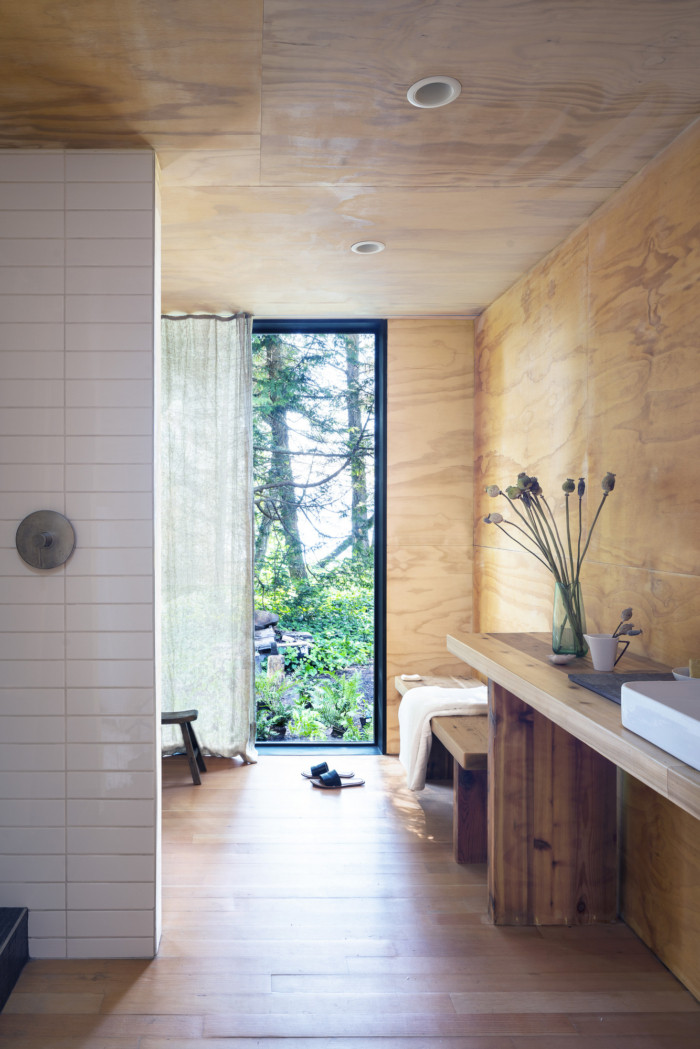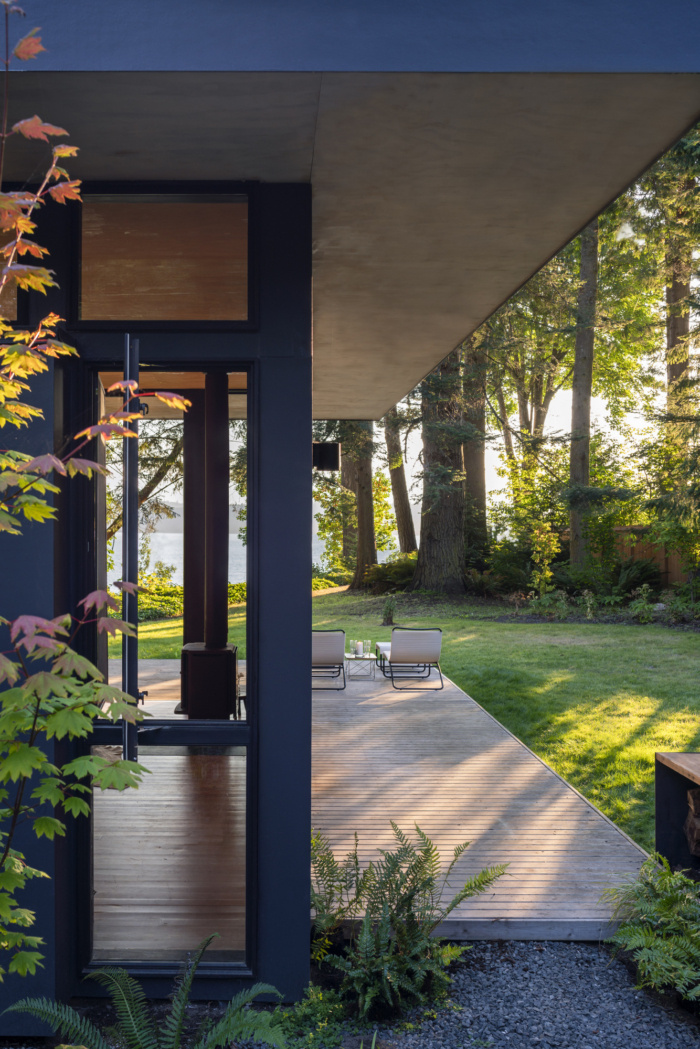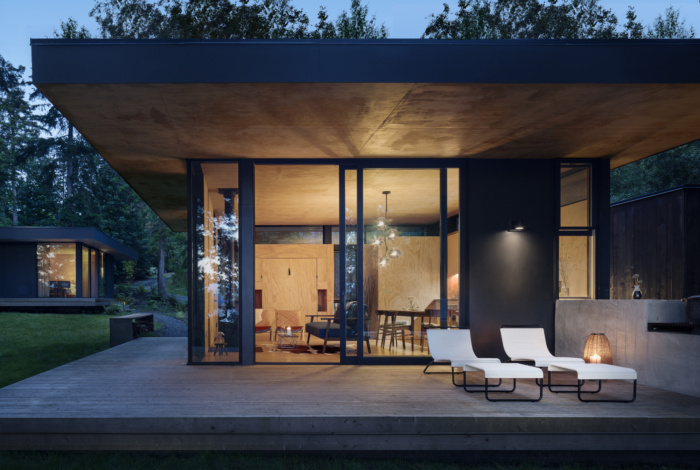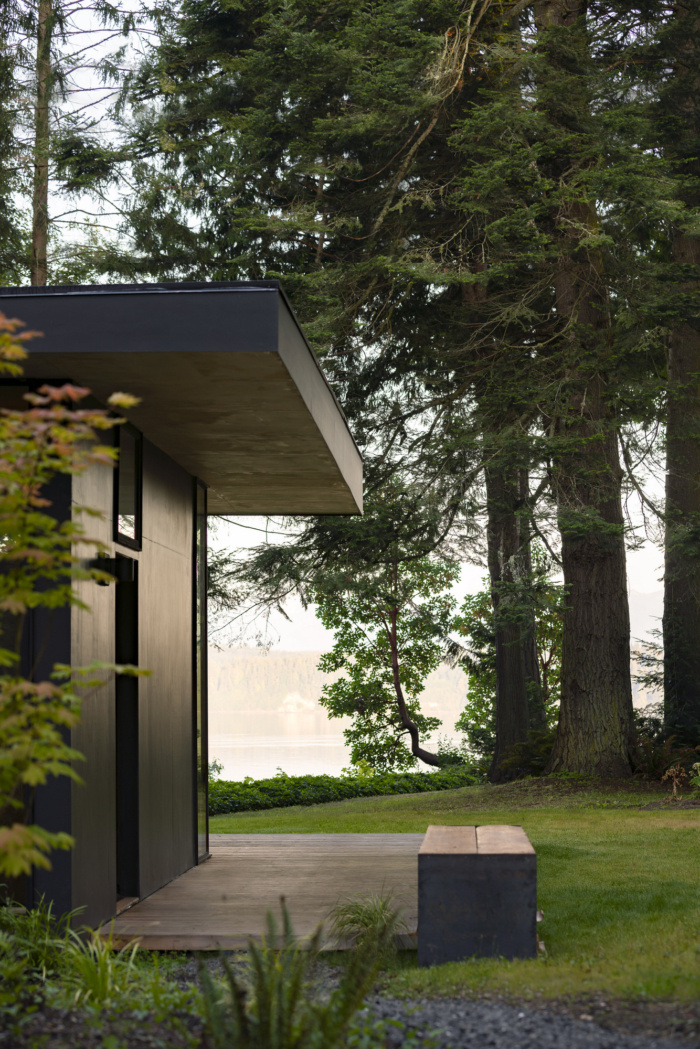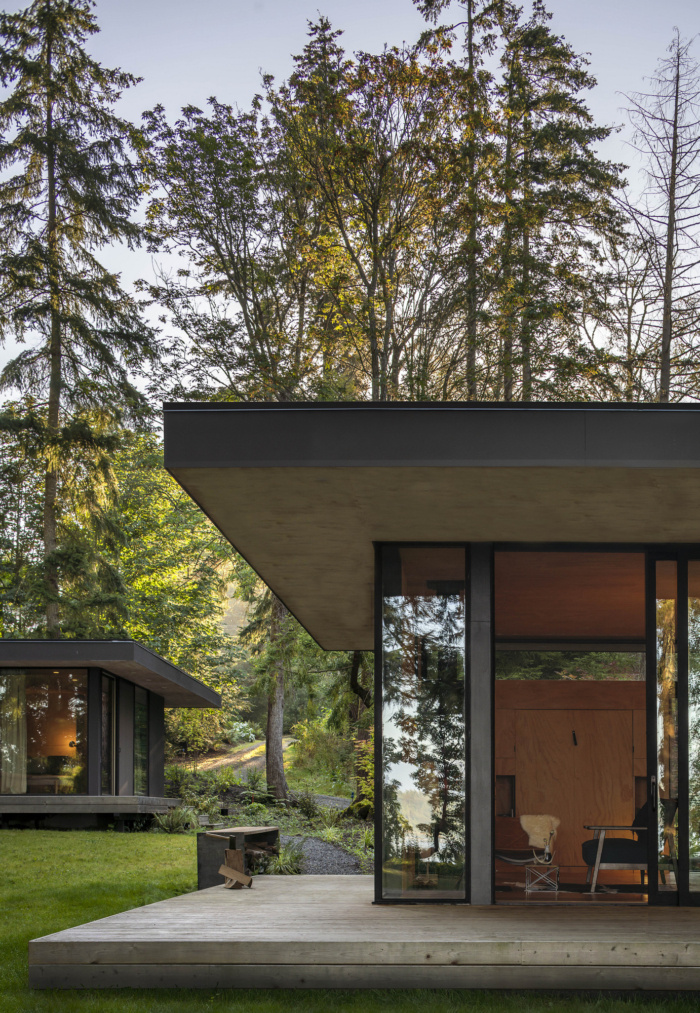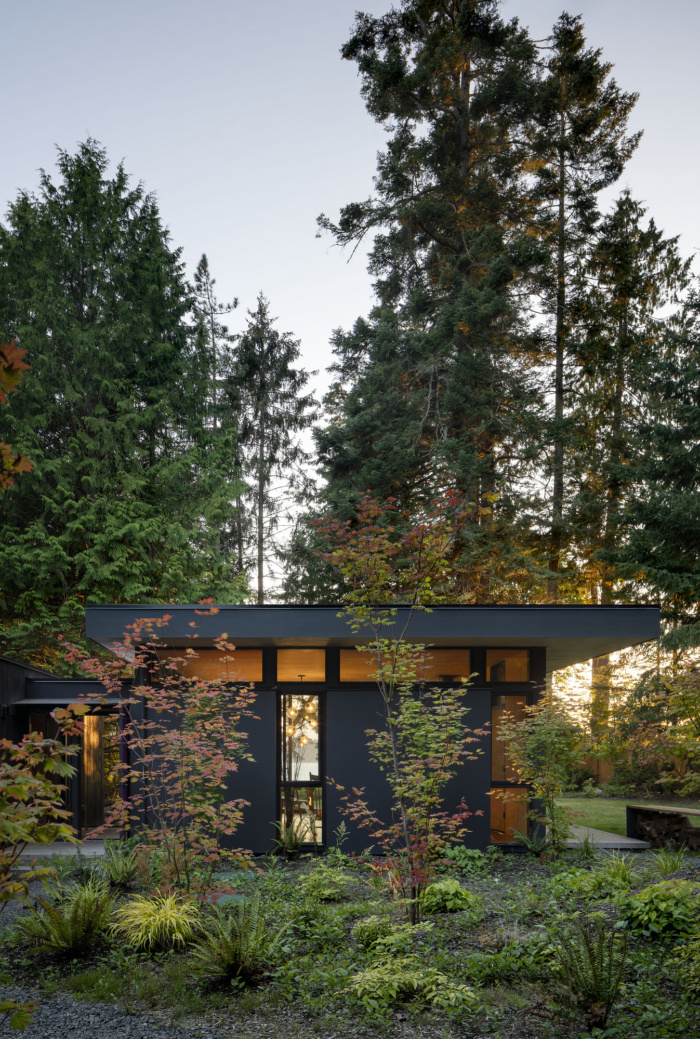Hood Cliff Retreat
Wittman Estes added two buildings and refurbished the existing cabin while, in the architects words, “dissolving the barriers between the inside and out, between forest, garden, and structure,” for the Hood Canal, Washington retreat home.
A series of family cabins hidden in the forest and overlooking Washington’s Hood Canal, the Hood Cliff Retreat is located on a 1.13 acre site atop a bluff on a wooded site on the western shore of Hood Canal in the Pacific Northwest.
Built on the site in 1962, the original dark and opaque cedar cabin left the owners feeling cut off from nature, and they asked for a indoor outdoor retreat that would allow them to be closer to the land and also house an expanded program of three additional bedrooms and sleeping quarters for their extended family.
The project has three elements: 1) The repurposed 20’x20’ footprint of the original cabin, 2) the cabin addition, and 3) a new bunkhouse and bathroom to the north.
The clients include owner, Pat Troth, who had a career in hydrology and forestry and had a deep love for trees, soils, and the richness of the natural world. Her husband, John Troth, is a wildlife photographer who travels internationally to capture images of birds and other animals in their native habitats. Their grown children work as natural resource scientists and spend much of their time deeply engaged with the outdoors.
The clients wanted a retreat where they could watch birds and take in the nature of the Hood Canal. While they loved modern architecture, they did not want a building that was overly expressive of itself. They asked for a set of simple structures that would allow them to be close to the land.
Reclaimed beams and siding from the original cabin were re-purposed as countertops and interior cladding. Simple details and a restrained material palette kept the construction budget to a minimum.
Sunlight warms the plywood walls and ceilings, grazing the warm cedar boards and cast-in-place concrete – allowing shadow and light to transform the simple interior into something more complex and subtle. In the main cabin, the indoor outdoor kitchen has a pass-through window that extends the interior countertop into the outdoor concrete counter and built in wood barbeque. There is a built-in Murphy bed that allows the main cabin to be a flexible sleeping area when needed. High clerestory windows allow views outdoors and natural light inside.
A reclaimed cast iron tub in the master bath creates the feeling of soaking in the outdoors without interrupting moments of repose. Outside, the rough sawn cedar siding and cement panel finishes patina naturally over time until the cabin volumes converge with the colors of the forest. This inside- outside connection is how the architects approach building sensitively in nature.
Architecture: Wittman Estes
Contractor: Jack Colgrove Construction
Photography: Andrew Pogue


